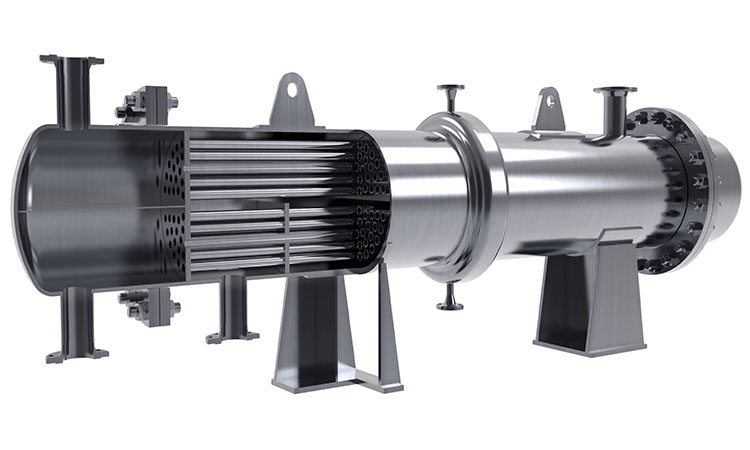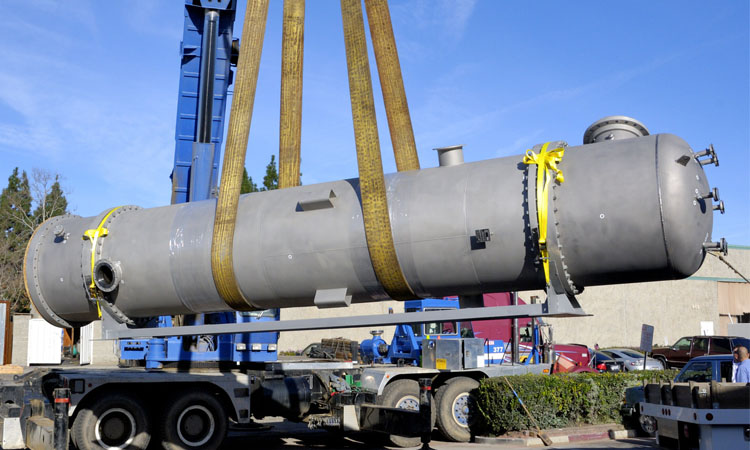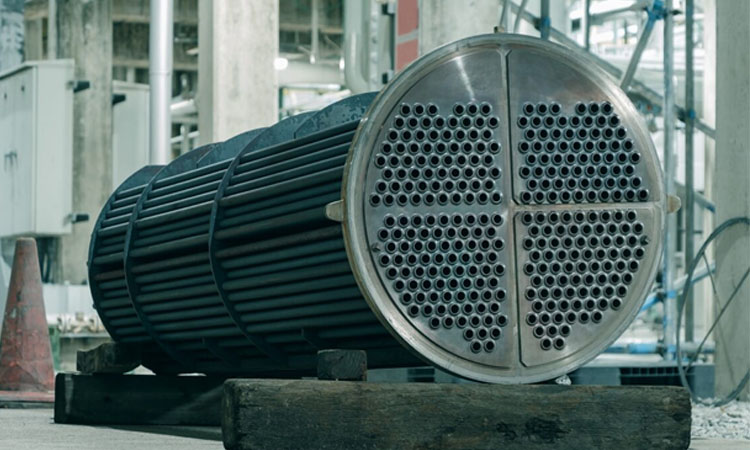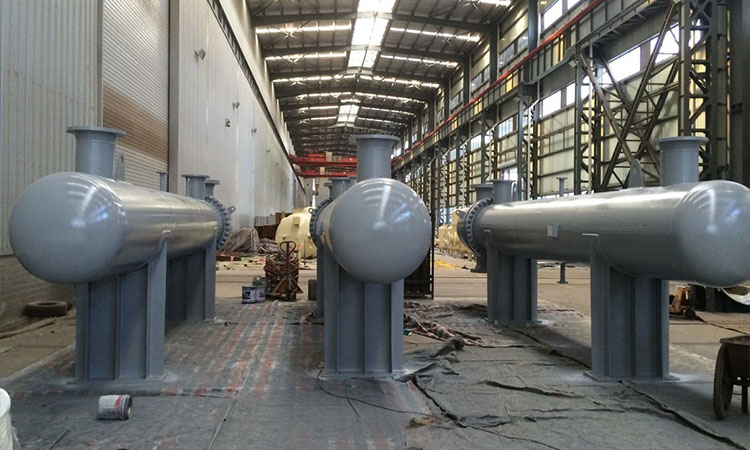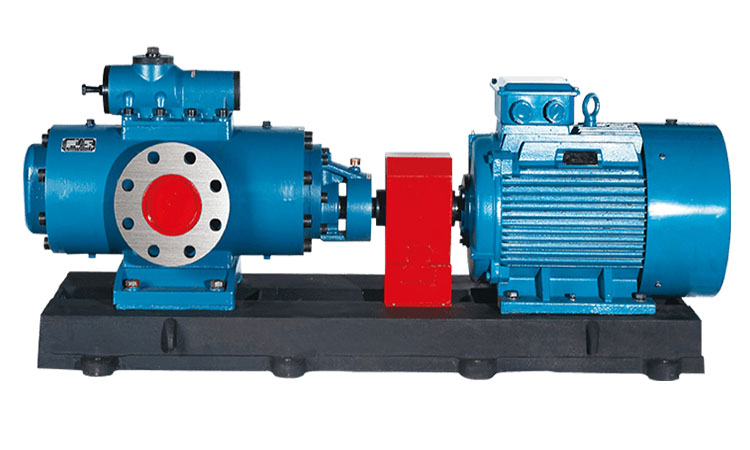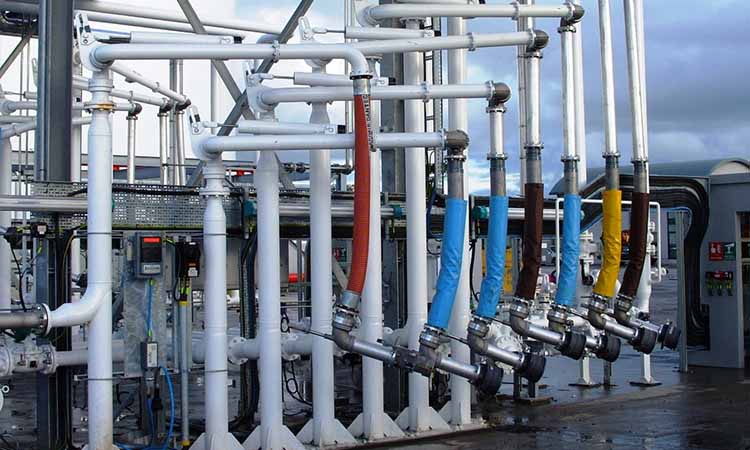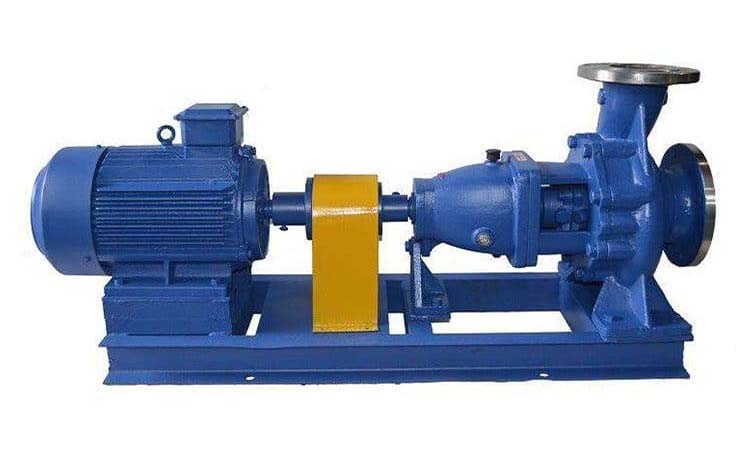Description
Overview of Shell and Tube Heat Exchangers
A shell and tube heat exchanger is a device where two working fluids exchange heat by thermal contact using tubes housed within a cylindrical shell. The fluid temperature inside the shell and tube are different and this temperature difference is the driving force for temperature exchange.Two fluids can exchange heat, one fluid flows over the outside of the tubes while the second fluid flows through the tubes.
Shell and tube heat exchanger is a partitioned wall heat exchanger that uses the wall of the tube bundle enclosed in the shell as the heat transfer surface. This kind of heat exchanger has simple structure, low cost, wide flow cross-section, and easy to clean scale. But it has low heat transfer coefficient and occupies a large area. It can be made of various structural materials (mainly metal materials), and can be used under high temperature and high pressure. It is the most widely used type.
Shell and tube heat exchangers are commonly used due to their very efficient heat exchange rate and because they are easily adapted to suit a range of purposes. They can be designed with a range of custom features to best suit the specific process requirements, improving efficiency and providing flexibility.
The process of a shell and tube heat exchanger involves the use of a liquid or steam that flows into the shell to heat the tubes.
Features of Shell and Tube Heat Exchangers
1. High efficiency and energy saving, the heat transfer coefficient of the heat exchanger is 6000-8000W/m2.0C.
2. Made of stainless steel, the service life is long, up to more than 20 years.
3. Changing laminar flow to turbulent flow improves heat transfer efficiency and reduces thermal resistance.
4. Fast heat exchange, high temperature resistance (400°C), high pressure resistance (2.5Mpa).
5. Compact structure, small footprint, light weight, easy installation, saving civil construction investment.
6. Flexible design, complete specifications, practical and targeted, saving money.
7. Wide range of application conditions, suitable for large pressure, temperature range and heat exchange of various media.
8. Low maintenance cost, easy operation, long descaling cycle and convenient cleaning.
9. Using nano-thermal film technology, the heat transfer coefficient is significantly increased.
10. The application field is wide, and can be widely used in thermal power, factories and mines, petrochemical industry, urban central heating, food and medicine, energy electronics, machinery and light industry and other fields.
11. The heat transfer tube adopts copper tube with rolled fins on the outer surface, which has high thermal conductivity and large heat transfer area.
12. The deflector guides the shell-side fluid to flow continuously in a broken line in the heat exchanger. The distance between the deflectors can be adjusted according to the optimal flow rate. The structure is firm and can meet the shell-side fluid with large flow rate or even super large flow rate and high pulsation frequency. heat exchange.
13. When the shell side fluid is oil, it is suitable for heat exchange with low viscosity and cleaner oil.
Components of Shell and Tube Heat Exchanger
Typically a Shell and Tube Heat Exchanger consists of two-compartment / section. One is shell side and the other is channel/tube side.
1. The shell side section consists of the following components: Shell, Cover, Body Flange, Nozzles, and Saddle support.
2. Channel / Tube side section consists of the following components: Channel, Cover, Body Flange, Nozzles, Tube Sheet, and Tubes (Tube Bundle)
The main components of shell and tube heat exchange equipment are: heat exchange tubes, tube sheets, shells, Tube Channeles, and baffles. These five components are interconnected to form a heat exchange device.
1. Heat Exchange Tube
The heat exchange tube is the heat transfer component of the tube-and-tube heat exchanger. The wall thickness is thin and more tubes can be arranged in the same shell diameter, which enlarges the total heat transfer area of the heat exchanger and prevents fouling. Compact, less metal material consumption in the heat transfer area, and slightly higher heat transfer efficiency.
The arrangement of heat exchange tubes on the cylinder includes equilateral triangle, equilateral triangle with corner, square and square with corner, etc. There are many triangular pipes and compact structure, but it is inconvenient to clean outside the pipe; square pipes are less, and the structure is not compact enough, but it is more convenient to clean outside the pipe. Generally, triangular arrangements are commonly used in fixed tube-sheet heat exchangers, and square arrangements are commonly used in floating head heat exchangers.
2. Tube Sheet
The tube sheet generally adopts an annular flat plate, on which holes are drilled and heat exchange tubes are placed, and a split-pass baffle is also set on the cylinder of the multi-tube heat exchanger. The tube sheet also functions to separate the space between the tube side and the shell side to prevent mixing of hot and cold liquids. Expansion joints, electric welding or a combination of both can be used between the tube sheet and the heat exchange tubes.
The expansion connection between the tube sheet and the heat exchange tube is to make use of the strength difference between the tube and the cylinder material, so that the diameter of the tube expands in the nozzle under the action of the tube expander and causes plastic deformation, while the cylinder only causes elastic deformation. Under the action of the ductile repair force, the tube behind the tube is firmly attached to the outer layer of the tube to achieve the purpose of tightness and tightening connection.
3. Shell
The shell of the tube-and-tube heat exchanger is all cylindrical, and the diameter is made of seamless tubes. When it is very large, it needs to be welded by thick steel plates. Different types of tube-and-tube heat exchangers have different interfaces between the shell and the shell. In the fixed tube-plate heat exchanger, the shells on both sides are connected to the shell by welding. In the floating head type and U-shaped tube heat exchangers, the cylinder at the fixed end is detachably connected to the shell, and the cylinder is clamped between the flange of the shell and the flange of the Tube Channel, which is convenient for the tube to be pulled out from the shell. Come out for cleaning and overhaul.
4. Tube Channel
The function of the Tube Channel is to evenly distribute the liquid entering the tube side to each heat exchange tube, and gather the liquid in the tube together to send it out of the heat exchanger. In the multi-tube heat exchanger, the Tube Channel can also be separated according to the set baffle.
5. Baffle
The baffle is a bow-shaped or disc-ring-shaped flat plate set vertically with the pipe in the shell. The installation of baffles drives the shell-side liquid to cross the pipe several times according to the required path, which not only increases the water flow rate but also increases the seepage rate, and improves the heat transfer effect. In the vertical heat exchanger, the front fender can also be folded. It has the function of supporting discipline.
Applications of Shell and Tube Heat Exchangers
They have the function to transfer heat as efficiently as possible.
1. Refrigeration
2. Air Conditioning
3. Space Heating
4. Electricity Generation
5. Chemical Processing
Types of Shell and Tube Heat Exchangers
Because the temperature of the fluid inside and outside the tube is different in the shell-and-tube heat exchanger, the temperature of the shell and the tube bundle of the heat exchanger is also different. If there is a large difference between the two temperatures, a large thermal stress will be generated in the heat exchanger, causing the tube to bend, break, or pull off the tube sheet. Therefore, when the temperature difference between the tube bundle and the shell exceeds 50°C, appropriate compensation measures should be taken to eliminate or reduce thermal stress. According to the compensation measures adopted, shell and tube heat exchangers can be divided into the following main types:
①The tube sheets at both ends of the tube bundle of the fixed tube-sheet heat exchanger are integrated with the shell. The structure is simple, but it is only suitable for heat exchange operations when the temperature difference between the hot and cold fluids is not large and the shell side does not need mechanical cleaning. When the temperature difference is slightly large and the shell side pressure is not too high, an elastic compensation ring can be installed on the shell to reduce thermal stress.
②The tube plate at one end of the tube bundle of the floating head heat exchanger can float freely, completely eliminating thermal stress; and the whole tube bundle can be pulled out from the shell, which is convenient for mechanical cleaning and maintenance. Floating head heat exchangers are widely used, but the structure is more complicated and the cost is higher.
③ U-shaped tube heat exchanger Each heat exchange tube is bent into a U shape, and the two ends are respectively fixed on the upper and lower areas of the same tube plate. This kind of heat exchanger completely eliminates thermal stress, and its structure is simpler than that of the floating head type, but the tube side is not easy to clean.
④ Vortex hot film heat exchanger The vortex hot film heat exchanger adopts the latest vortex hot film heat transfer technology, which increases the heat transfer effect by changing the fluid motion state. Thermal efficiency. Up to 10000W/m2℃. At the same time, this structure realizes the functions of corrosion resistance, high temperature resistance, high pressure resistance and anti-scaling. The fluid channels of other types of heat exchangers are in the form of fixed-direction flow, which forms a bypass flow on the surface of the heat exchange tube, and the convective heat transfer coefficient is reduced.
Price of Shell and Tube Heat Exchangers
The Shell and Tube Heat Exchangers Price will change randomly with factors such as production cost, transportation cost, international situation, exchange rate, market supply and demand of raw materials. Sino Mechanical aims to provide you with high quality and best price Shell and Tube Heat Exchangers. If you are looking for Shell and Tube Heat Exchangers or Shell and Tube Heat Exchangers spares, please kindly contact us to get the latest Shell and Tube Heat Exchangers price.
Shell and Tube Heat Exchangers Supplier
Sino Mechanical, as a Shell and Tube Heat Exchangers manufacturer, has more than 20 years extensive experiences in the performance, application and cost-effective manufacturing of Shell and Tube Heat Exchangers. We are global Shell and Tube Heat Exchangers supplier. We offer a wide range of oilfield equipment and have Shell and Tube Heat Exchangers for sale. We also provide OEM services. We design, manufacture, and sell Shell and Tube Heat Exchangers for your oilfield applications. If you want to know latest Shell and Tube Heat Exchangers price , don’t hesitate to contact us anytime. We will get back to you within 24 hours.
Specification
Technical Specifications of Shell and Tube Heat Exchangers
Heat exchanger is equipment widely used both upstream and downstream facilities, built for efficient heat transfer from one medium to another. Heat exchangers are classified by flow arrangement, parallel flow and counterflow. Parallel flow (cocurrent) is flow when two fluids enter the exchanger at the same end and travel parallel to one another to the other side. Counterflow (countercurrent) is when two fluids enter the exchanger from opposite ends.
Uses of heat exchangers may vary depending on the process requirements, such as heat and cool fluids, heat recovery, separation, reboiling, condensing.
Shell and tube heat exchanger consist of a bundle of tubes and shell. Heat transfer occurs when one fluid that needs to be heated or cooled flows through the tubes and the second fluids runs over the tubes that provides the heat or absorbs the heat required.
Shell and tube heat exchanger is composed of shell, heat transfer tube bundle, tube sheet, baffle plate and channel. Several baffles are usually installed in the shell. The baffle can increase the fluid velocity on the shell side, forcing the fluid to pass through the tube bundle multiple times in a prescribed way, and enhance the fluid turbulence degree. The heat exchange tubes can be arranged in equilateral triangle or square on the tube sheet. The equilateral triangle arrangement is relatively compact, the turbulent degree of fluid outside the tube is high, and the heat transfer coefficient is large; the square arrangement makes the tube easy to clean and suitable for the fluid which is easy to scale.
Main consideration for the design should be fluid involved, corrosion potential, problems of cleaning, pressure drop, heat transfer efficiency, tubes usually 20 ft. and 20ft.

